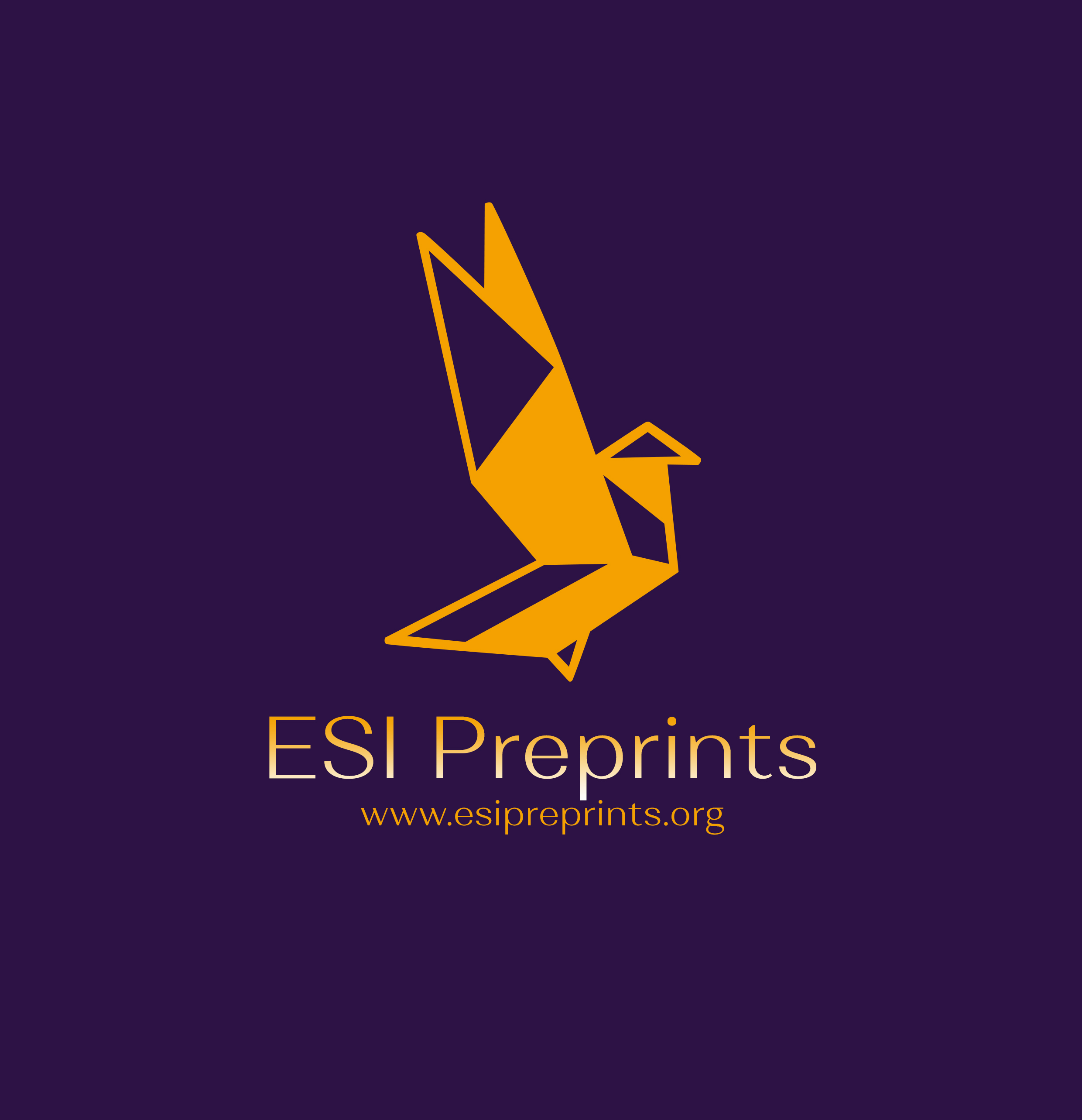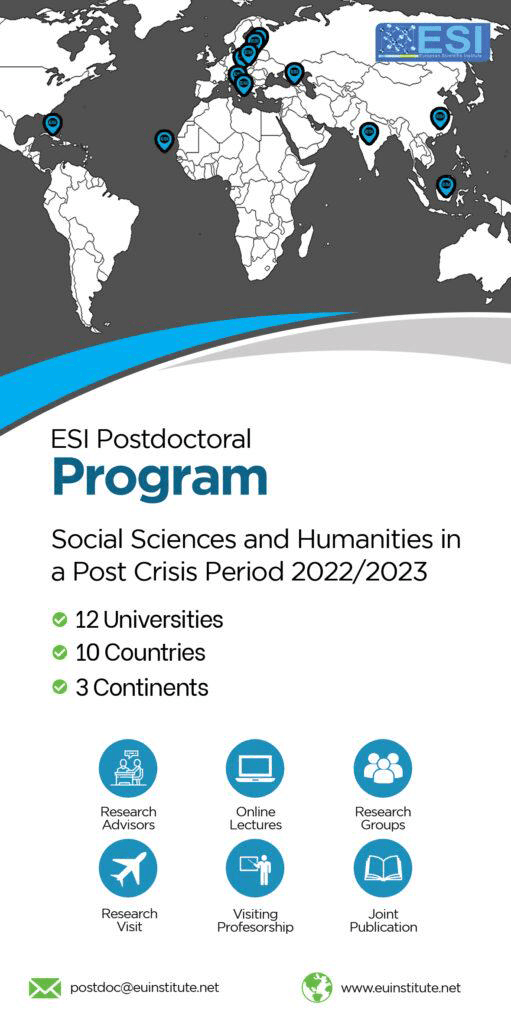Digital Linguistic Markers of Emotions As of the September 2024 Hostilities in Lebanon: A Case Study in Communication Arts Course at a University Level in Southern Lebanon
Abstract
Language and emotions are intricate systems that have several interactions. Amid the expeditious spread of digitalization and the upswing of various international issues, this case study seeks to explore how students at the Lebanese University in the South utilize language on social media to convey their emotions as of the 2024 clashes and airstrikes in Lebanon. Further, it aims to identify digital linguistic markers that reflect key emotional states and social identity. Drawing on discourse analysis which acknowledges language as a dynamic system that is influenced by shared experiences, values, and beliefs, and importantly, by Conceptual Act Theory which explores how meaning is constructed from experiences and perceptions and on sentiment analysis, a mixed-methods approach is employed. A convenient sampling of (191) university EFL students taking the Communication Arts module during the fall semester of 2024-2025 complete an online survey of 15 multiple choice and Likert scale items. Twelve students joined a focus group discussion and 155 out of 191 participants interacted on the web-based application, Padlet. The findings show that utilizing language in the context of social media platforms through words, emojis, hashtags, slogans, or posting articles, images, or videos, plays a vital role not only in channelling positive and negative sentiments in a constructive way, but also in signaling to belong to a collective identity during times of crisis in Lebanon. The overall analysis indicated that using various linguistic practices on social media platforms communicates positive and negative emotions, and upholds social norms and ideologies.
Downloads
Metrics
References
2. Alsaeedi, A., & Khan, M. Z. (2019). A study on sentiment analysis techniques of Twitter data. International Journal of Advanced Computer Science and Applications (IJACSA), 10(2), 361-368. https://doi.org/10.14569/IJACSA.2019.0100248
3. Baele, S. J., Sterck, O. C., & Meur, E. (2016). Theorizing and measuring emotions in conflict: The case of the 2011 Palestinian statehood bid. The Journal of Conflict Resolution, 60(4), 718–747. https://doi.org/10.1177/002200271455008
4. Bleiker, R., & Hutchison, E. (2008). Fear no more: Emotions and world politics. Review of International Studies, 34(1), 115-135. https://doi.org/10.1017/S0260210508007530
5. Cammaerts, B., & Audenhove, L. V. (2005). Online political debate, unbounded citizenship, and the problematic nature of a transnational public sphere. Political Communication, 22(2), 179–196. https://doi.org/10.1080/10584600590933188
6. Chalise, A. (2024). Scrolling social media sentiments on the Gaza War. The Cairo Review of Global Affairs. https://www.thecairoreview.com/essays/scrolling-social-media-sentiments-on-the-gaza-war/
7. Chehimi, G., & Joudi, N. (2017). The need for peace education in higher education in Lebanon. In Factis Pax, 11(2), 224-247.
8. Eastman, C. M. (1985). Establishing social identity through language use. Journal of Language and Social Psychology, 4(1), 1-20. https://doi.org/10.1177/0261927X8500400101
9. Edwards. (2024). Exploring discourse analysis: Language and social reality. Easy Sociology: Research methods, Sociology of language. https://easysociology.com/sociology-of-language/exploring-discourse-analysis-language-and-social-reality
10. Fattah, K., & Fierke, K. (2009). A clash of emotions: The politics of humiliation and political violence in the Middle East. European Journal of International Relations, 15(1), 67-93. https://doi.org/10.1177/1354066108100871
11. Gee, J. (2011). An introduction to discourse analysis: Theory and method (3rd ed.). Routledge.
12. Halperin, E., Russell, A., Dweck, C. S., & Gross, J. J. (2011). Anger, hatred, and the quest for peace: Anger can be constructive in the absence of hatred. Journal of Conflict Resolution, 55(2), 274-291. https://doi.org/10.1177/0022002710382927
13. He, Q., Glas, C. A. W., Kosinski, M., Stillwell, D. J., & Veldkamp, B. P. (2014). Predicting self-monitoring skills using textual posts on Facebook. Computers in Human Behavior, 33, 69–78. https://doi.org/10.1016/j.chb.2013.12.027
14. Jaspal, R. (2009). Language and social identity: A psychosocial approach. University of London.
15. Joudi, N. (2024). Online blogging versus conventional methods: An exploratory study of EFL Lebanese secondary school teachers’ perceptions on teaching writing. Gloria: International Multidisciplinary Studies, 1(1), 23-58.
16. Joudi, N. (2019). Gender leadership styles and linguistic practices: The case of Lebanese International University coordinators. International Journal of Innovative Research in Education, 6(2), 047–061. https://doi.org/10.18844/ijire.v6i2.4362
17. Joudi, N., & Ayoub, N. (2024). Integrating microblogging padlets and SFL framework in teaching persuasive writing skills in communication arts course at a university level in Lebanon. Gloria: International Multidisciplinary Studies, 1(1), 23-58.
18. Khan, K. (2024). The role of social media in information warfare. LinkedIn. https://www.linkedin.com/pulse/role-social-media-information-warfare-khurshid-khan-abkfc/
19. Kharroub, T. (2023). Disinformation and hate speech on social media contribute to inciting war crimes against Gaza. Arab Center Washington DC. https://arabcenterdc.org/resource/disinformation-and-hate-speech-on-social-media-contribute-to-inciting-war-crimes-against-gaza/
20. Kuntsman, A. (2010). Webs of hate in diasporic cyberspaces: The Gaza war in the Russian-language blogosphere. Media, War & Conflict, 3 (3), 299–313.
21. Lindquist, K. A., MacCormack, J. K., & Shablack, H. (2015). The role of language in emotion: Predictions from psychological constructionism. Frontiers in Psychology, 6, 444. https://doi.org/10.3389/fpsyg.2015.00444
22. Lindquist, K. A. (2013). Emotions emerge from more basic psychological ingredients: A modern psychological constructionist model. Emotion Review, 5(4), 356–358. https://doi.org/10.1177/1754073913489750
23. Lindquist, K. A., Wager, T. D., Kober, H., Bliss-Moreau, E., & Barrett, L. F. (2012). The brain basis of emotion: A meta-analytic review. Behavioral and Brain Sciences, 35(3), 121–143. https://doi.org/10.1017/S0140525X11000446
24. Majid, A. (2012). Current emotion research in the language sciences. Emotion Review, 4(4), 432–443. https://doi.org/10.1177/1754073912445827
25. Mehmood, Y., & Balakrishnan, V. (2020). An enhanced lexicon-based approach for sentiment analysis: A case study on illegal immigration. Online Information Review, 44(5), 1468-1485. https://doi.org/10.1108/OIR-10-2018-0295
26. Monroe, K. R. (1996). The heart of altruism: Perceptions of common humanity. Princeton University Press.
27. McFarland, S., Webb, M., & Brown, D. (2012). All humanity is my ingroup: A measure and studies of identification with all humanity. Journal of Personality and Social Psychology, 103(5), 830–853. https://doi.org/10.1037/a0028724
28. Medhat, W., Hassan, A., & Korashy, H. (2014). Sentiment analysis algorithms and applications: A survey. Ain Shams Engineering Journal, 5(4), 1093-1113. https://doi.org/10.1016/j.asej.2014.04.011
29. Nahar, K. M. O., & Jaradat, M. S. F. (2020). Sentiment analysis and classification of Arab Jordanian Facebook comments for Jordanian telecom companies using lexicon-based approach and machine learning. Jordanian Journal of Computers and Information Technology (JJCIT), 6(3).
30. Nandy, H., & Sridhar, R. (2020). Filtering-based text sentiment analysis for Twitter dataset. Advances in Artificial Intelligence and Data Engineering, 1035-1046. https://doi.org/10.1007/978-981-15-3514-7_77
31. Negri, A., Andreoli, G., Barazzetti, A., Zamin, C., & Christian, C. (2020). Linguistic markers of the emotion elaboration surrounding the confinement period in the Italian epicenter of COVID-19 outbreak. Frontiers in Psychology, 11, 568281. https://doi.org/10.3389/fpsyg.2020.568281
32. Nerbonne J.(2014), The secret life of pronouns. What our words say about us. Literary and Linguistic Computing, 29 (1), 139–142. https://doi.org/10.1093/llc/fqt006
33. O’Brien, E. (2024). Why are young people so passionate about Gaza? Global Bar Magazine. https://globalbar.se/2024/05/why-are-young-people-so-passionate-about-gaza
34. Osman, N. (2023). War on Gaza: How language used by media outlets downplays Palestinian suffering. Middle East Eye. https://www.middleeasteye.net/news/gaza-war-language-media-outlets-downplays-palestinian-suffering
35. Oprea, D. (2019). Discourse analysis in social media. International Multidisciplinary Scientific Conference on the Dialogue between Sciences & Arts, Religion & Education, 315-320. https://doi.org/10.26520/mcdsare.2019.3.315-320
36. Ortigosa, A., Carro, R. M., & Quiroga, J. I. (2014). Predicting user personality by mining social interactions on Facebook. Journal of Computer and System Sciences, 80(1), 57-71. https://doi.org/10.1016/j.jcss.2013.03.008
37. Pang, B., & Lee, L. (2008). Opinion mining and sentiment analysis. Foundations and Trends in Information Retrieval, 2(1–2), 1–135. https://doi.org/10.1561/1500000011
38. Parkinson, B., Fischer, A. H., & Manstead, A. S. R. (2005). Emotion in social relations: Cultural, group, and interpersonal processes. Psychology Press.
39. Ravi, K., & Ravi, V. (2015). A survey on opinion mining and sentiment analysis: Tasks, approaches, and applications. Knowledge-Based Systems, 89, 14-46. https://doi.org/10.1016/j.knosys.2015.06.015
40. Sailunaz, K., & Alhajj, R. (2019). Emotion and sentiment analysis from Twitter text. Journal of Computational Science, 36. https://doi.org/10.1016/j.jocs.2019.05.009
41. Smith, E. R. (1993). Social identity and social emotions: Toward new conceptualizations of prejudice. In D. M. Mackie & D. L. Hamilton (Eds.), Affect, cognition, and stereotyping: Interactive processes in group perception (pp. 297–315). Academic Press.
42. Smith, E. R., & Mackie, D. M. (2008). Intergroup emotions. In M. Lewis, J. M. Haviland-Jones, & L. F. Barrett (Eds.), Handbook of emotions (3rd ed., pp. 428–439). The Guilford Press.
43. Stoy, L. (2021). Sentiment analysis: A deep dive into the theory, methods, and applications. Lazarina Stoy. https://lazarinastoy.com/sentiment-analysis-theory-methods-applications/
44. Tajfel, H. (1978). The achievement of inter-group differentiation. In H. Tajfel (Ed.), Differentiation between social groups (pp. 77–100). Academic Press.
45. Tajfel, H., & Turner, J. C. (1979). An integrative theory of inter-group conflict. In W. G. Austin & S. Worchel (Eds.), The social psychology of inter-group relations (pp. 33–47). Brooks/Cole.
46. Tajfel, H., & Turner, J. C. (1986). The social identity theory of intergroup behavior. In W. G. Austin & S. Worchel (Eds.), Psychology of intergroup relations (2nd ed., pp. 7–24). Nelson-Hall.
47. Tausczik, Y. R., & Pennebaker, J. W. (2010). The psychological meaning of words: LIWC and computerized text analysis methods. Journal of Language and Social Psychology, 29(1), 24-54. https://doi.org/10.1177/0261927X09351676
48. Taboada, M., Brooke, J., Tofiloski, M., Voll, K., & Stede, M. (2011). Lexicon-based methods for sentiment analysis. Computational Linguistics, 37(2), 267-307. https://doi.org/10.1162/COLI_a_00049
49. Ye, S., Ho, K.K.W., Wakabayashi, K., & Kato, Y. (2023). Relationship between university students’ emotional expression on tweets and subjective well-being: Considering the effects of their self-presentation and online communication skills. BMC Public Health, 23, 594 . https://doi.org/10.1186/s12889-023-15485-2
50. Zafarani, R., & Liu, H. (2014). Behavior analysis in social media. IEEE Intelligent Systems, 29(4), 67-70. https://doi.org/10.1109/MIS.2014.46
Copyright (c) 2025 Nadine Sami Joudi, Nawal Nabih Ayoub

This work is licensed under a Creative Commons Attribution 4.0 International License.








